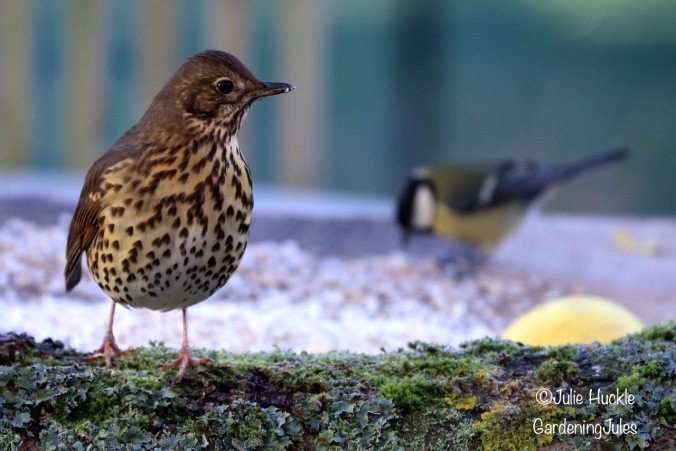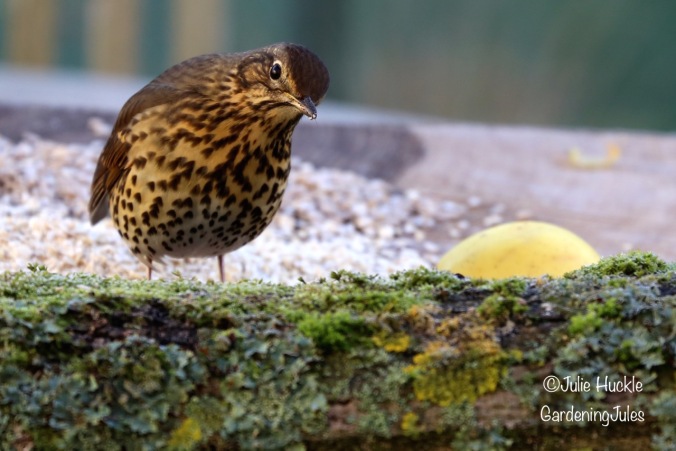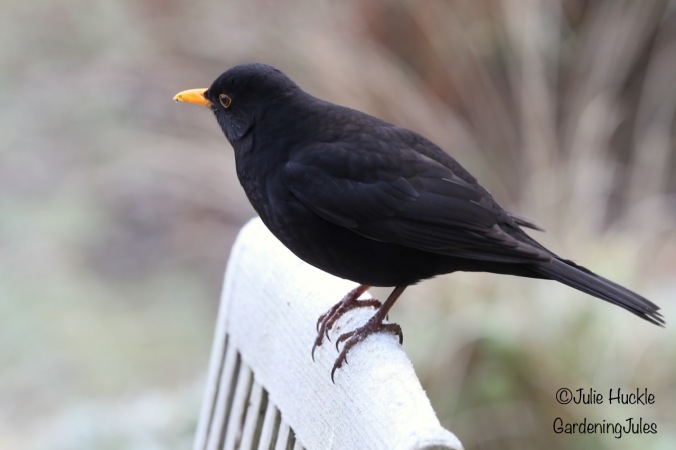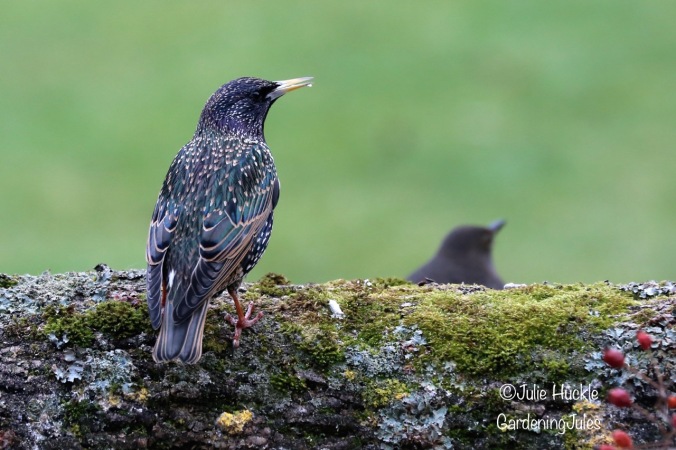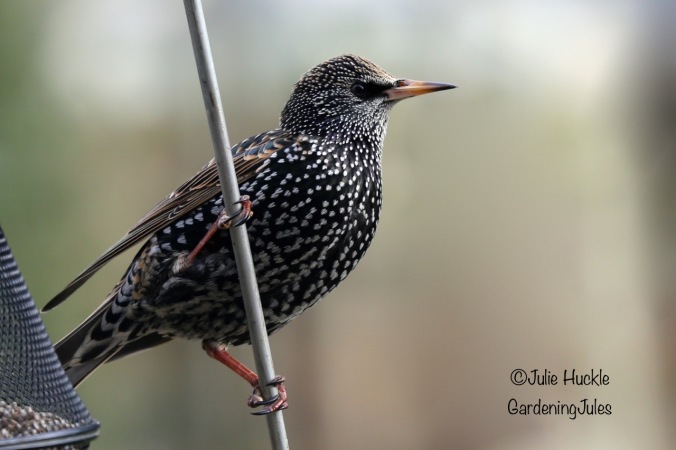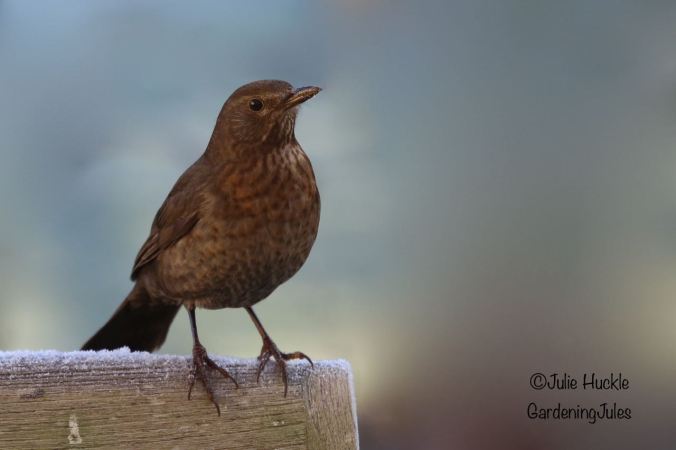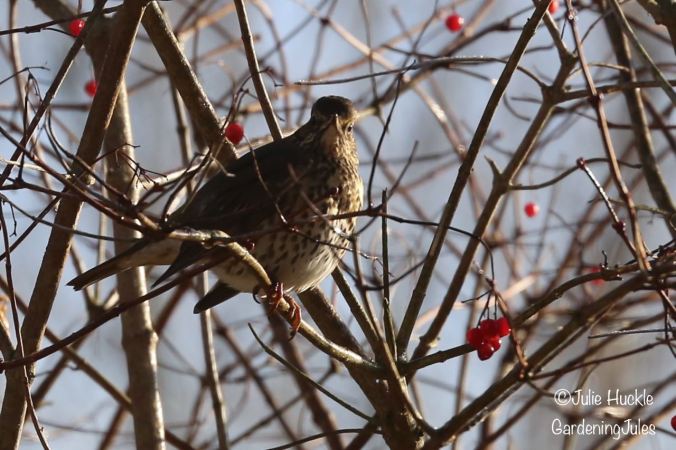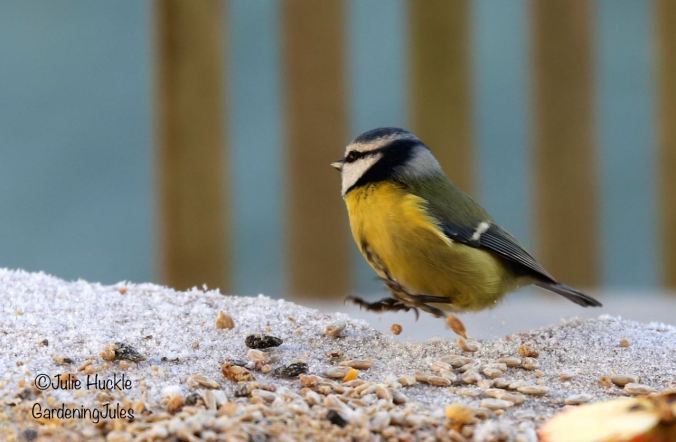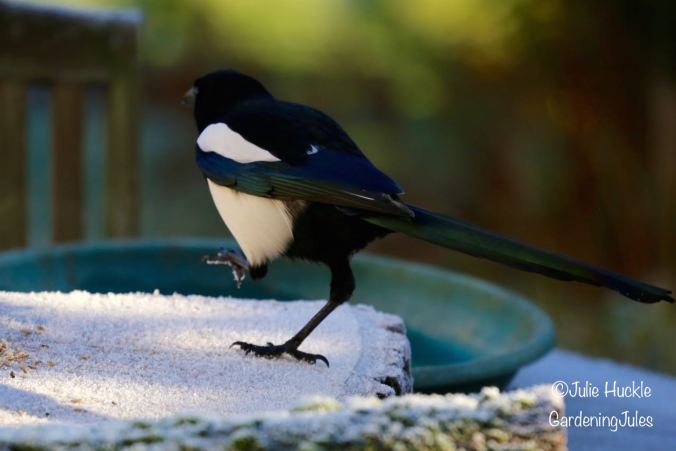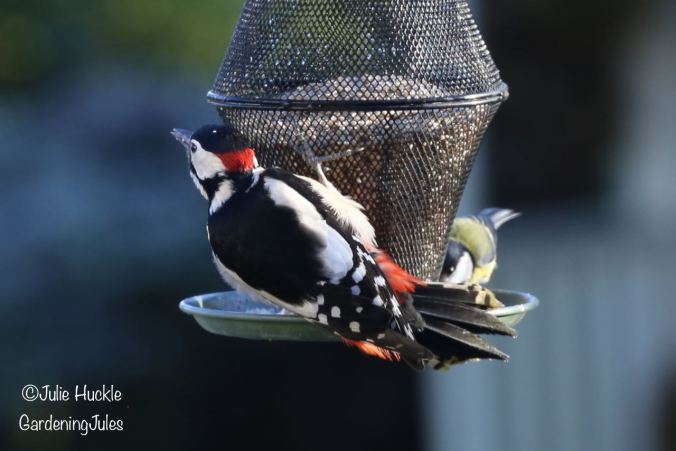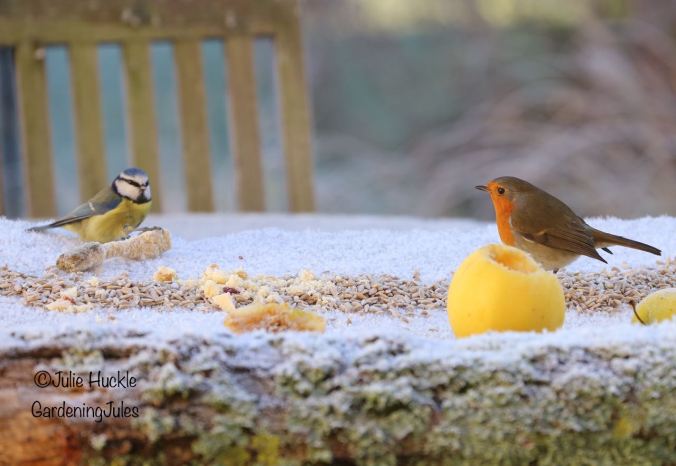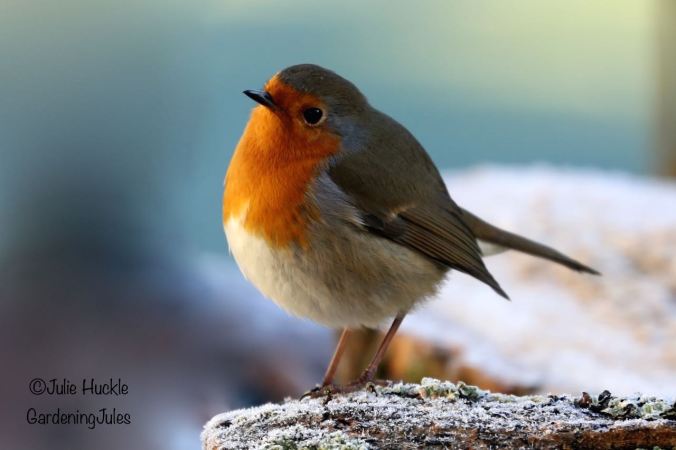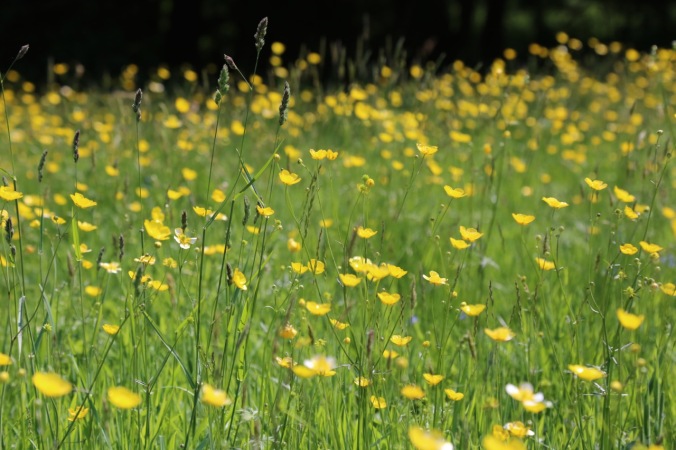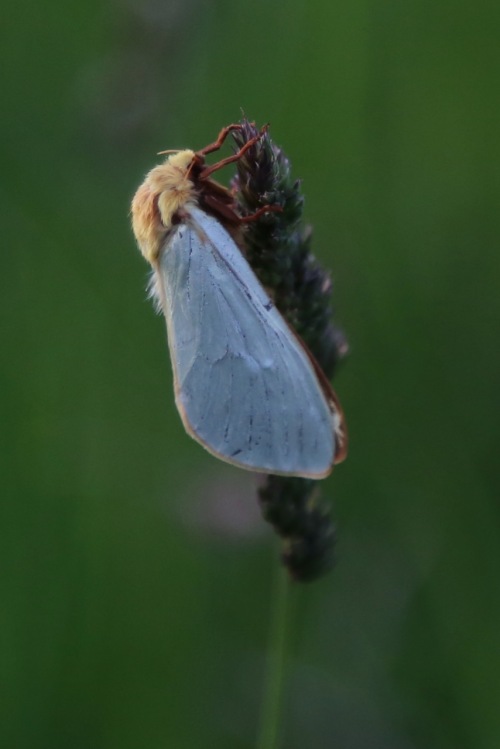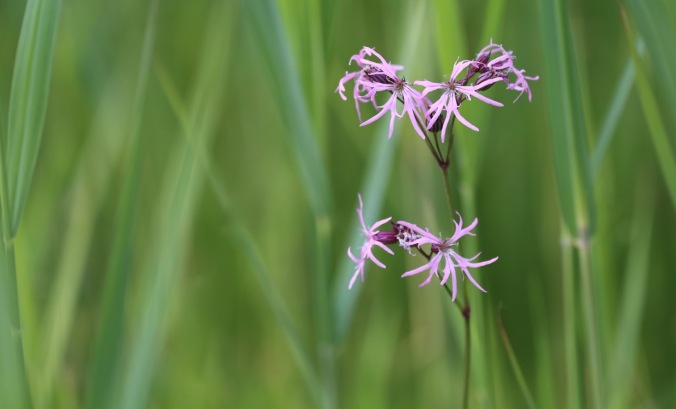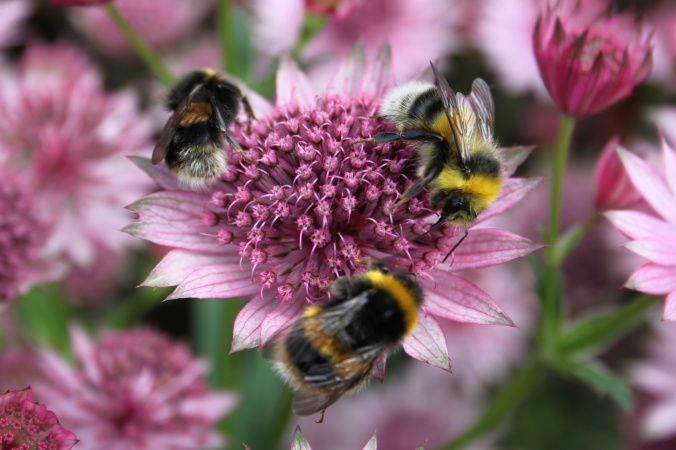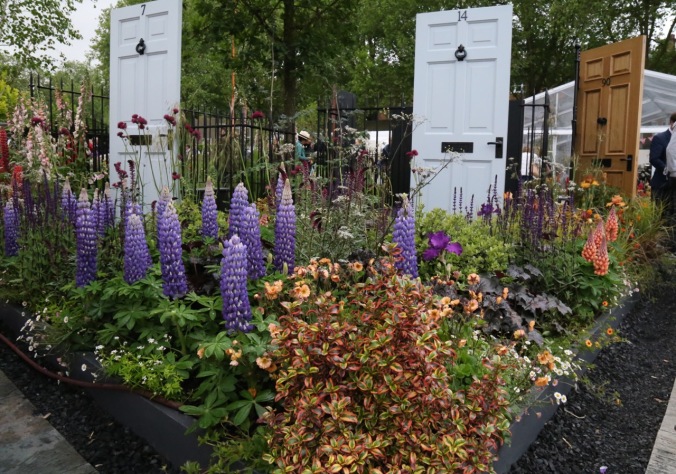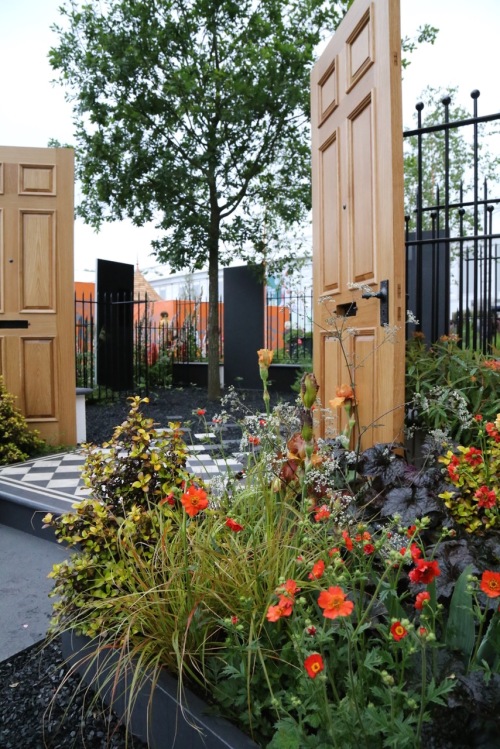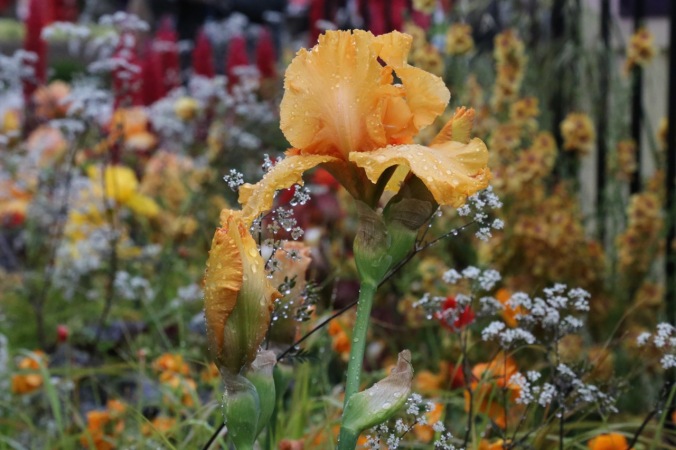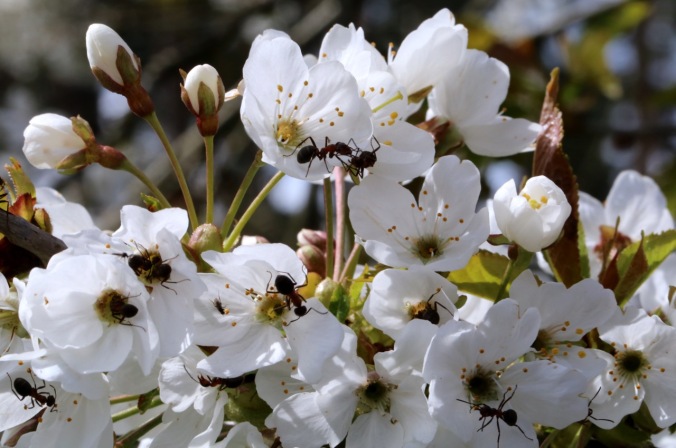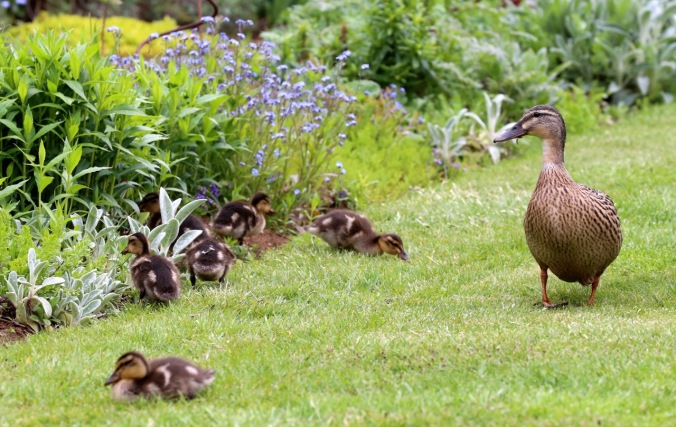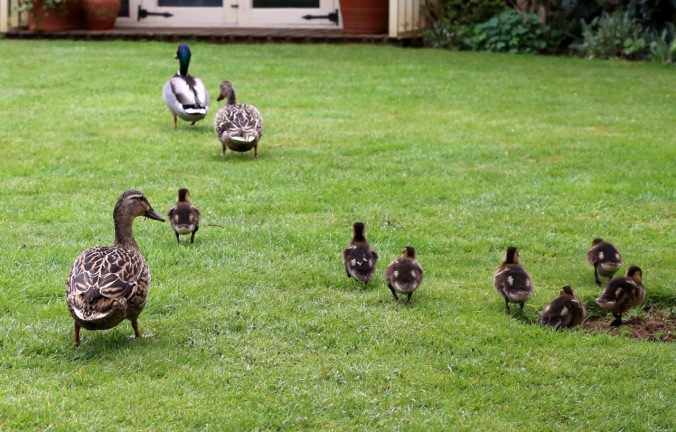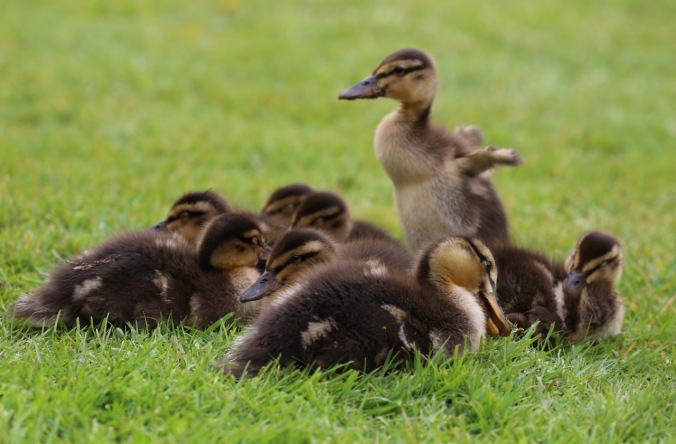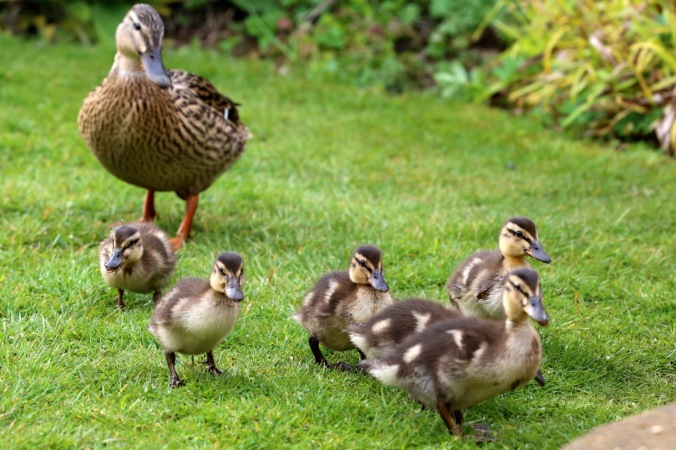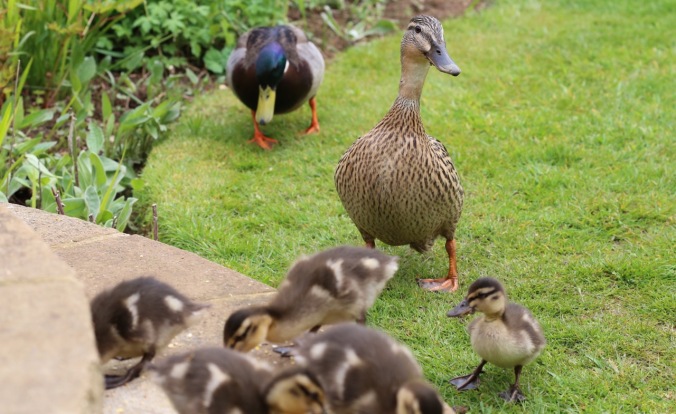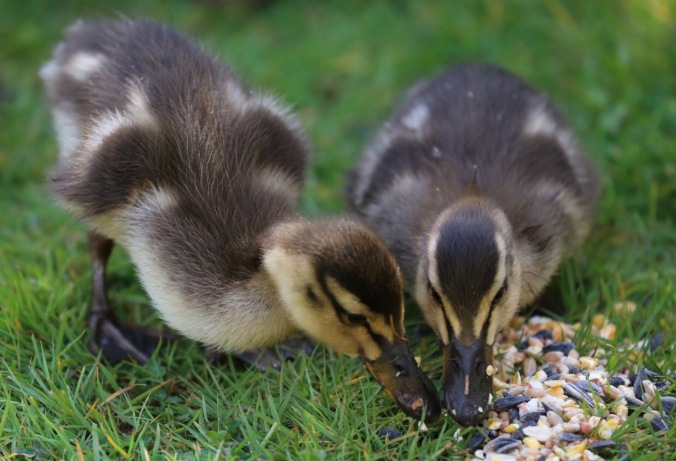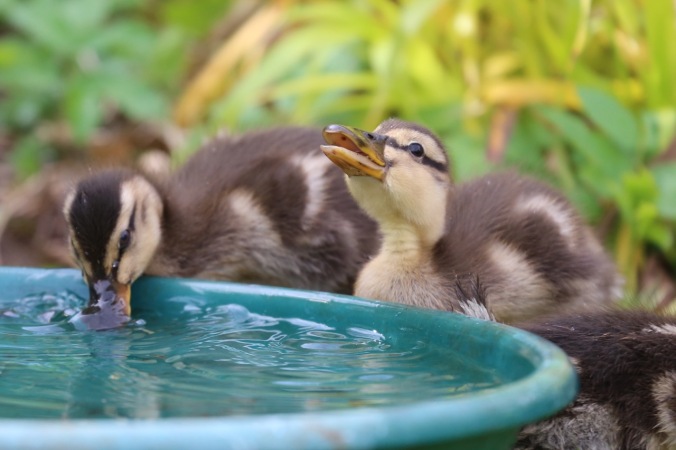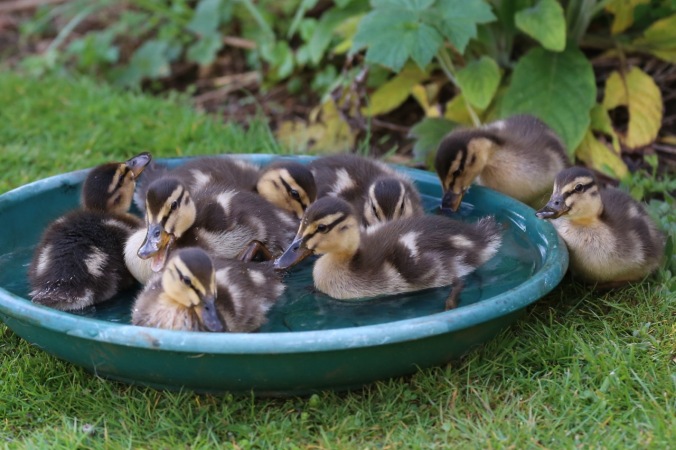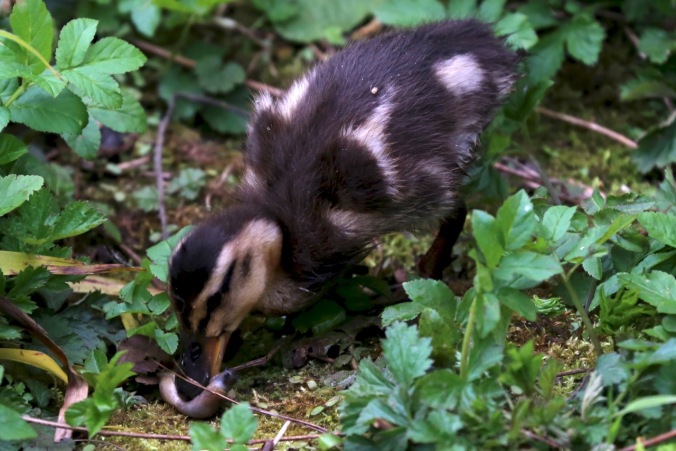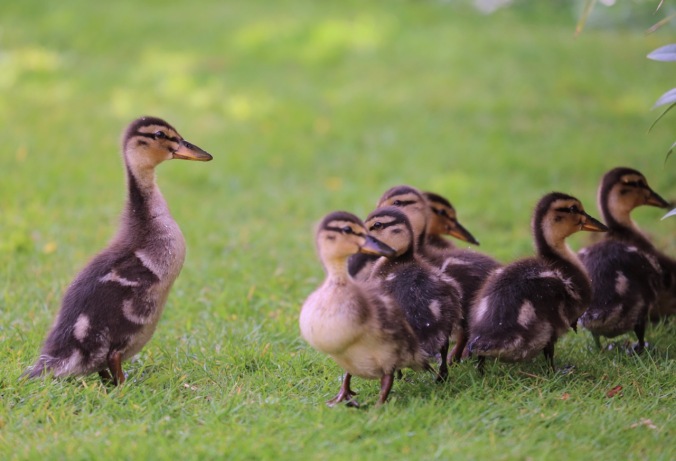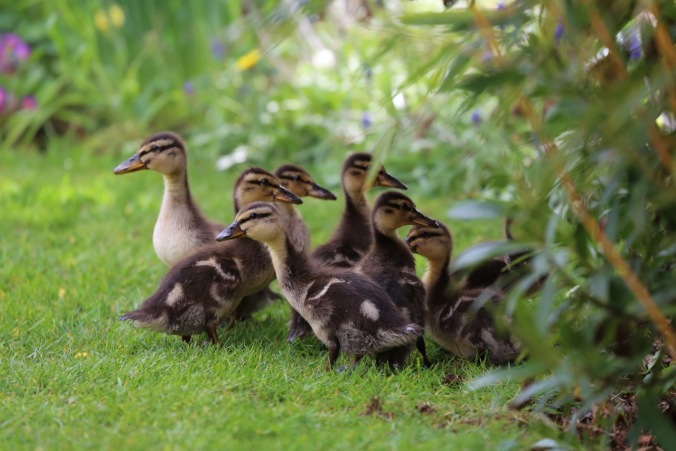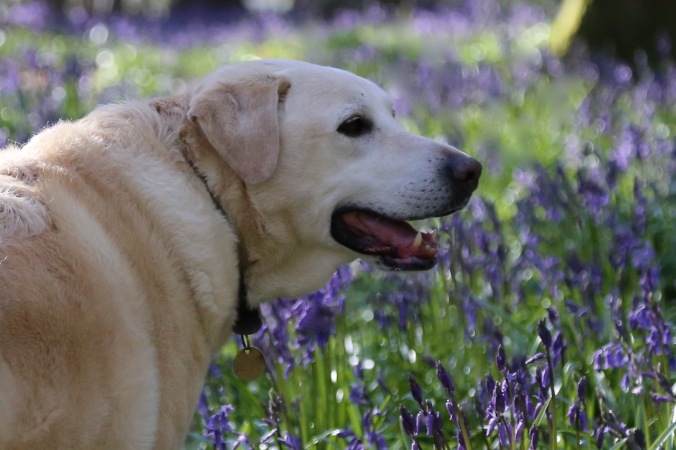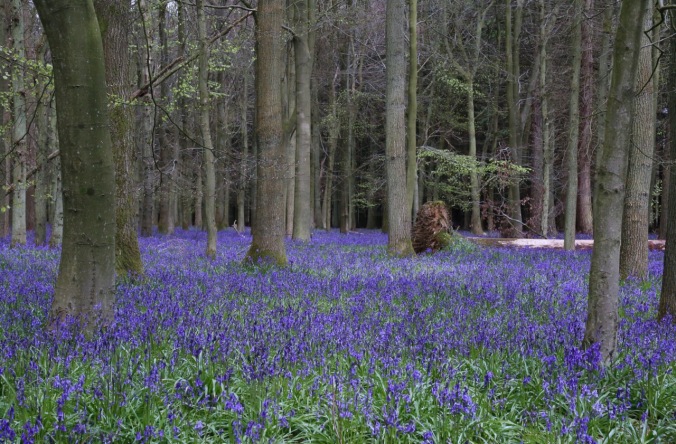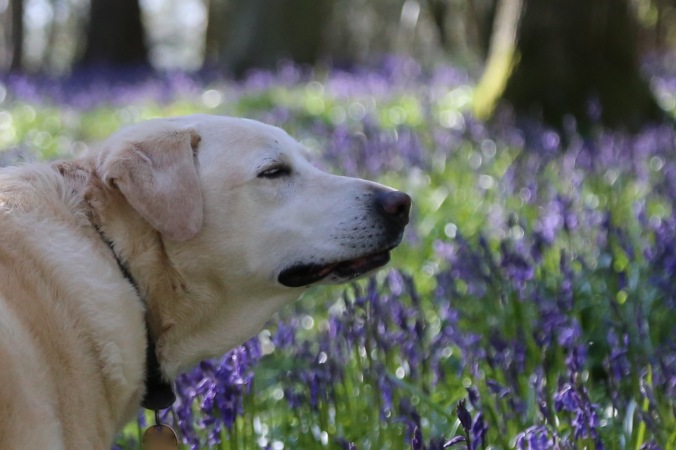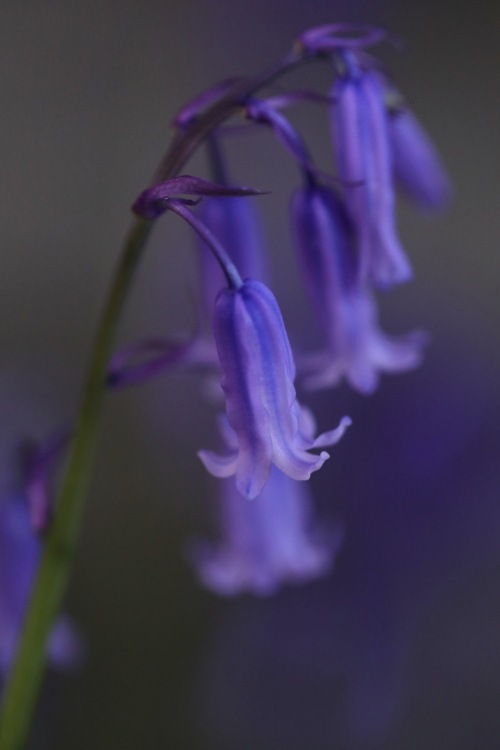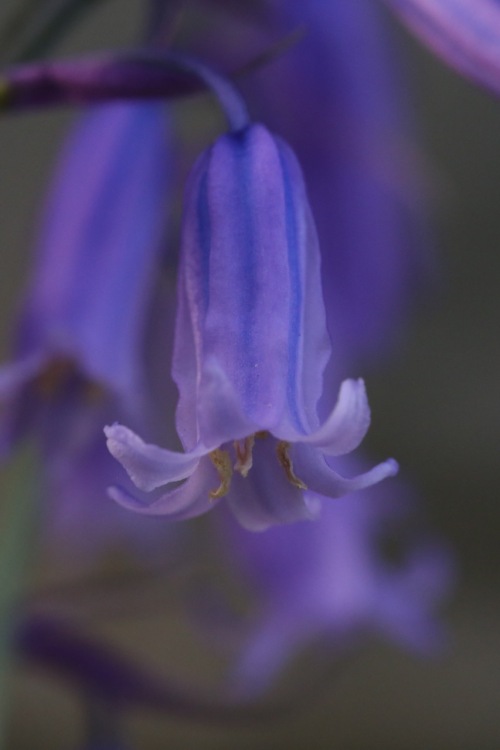Wildlife Wednesday At Home and Abroad
Another month has passed and at home our visiting garden wildlife has brought uplifting rays of sunshine in an otherwise bitterly cold and often dreary January.
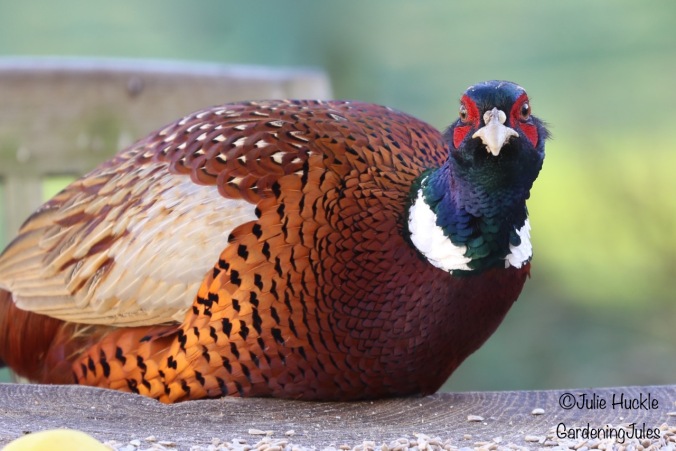
Male Pheasant
Pheasants visit each winter, occasionally we see Red Legged Partridges too. A staggering 35 million are factory farmed in abhorrent conditions and later released for shooting. The League of Cruel Sports video (highlighted in green) of conditions is really grim watching and the accompanying text alarming.
In better news, our visiting Song Thrush is now a regular on the bird table, they are a red status bird, in serious decline. He or she just scrapped in, on my allotted hour of the annual RSPB Big Garden Birdwatch, which made me wonder if results get skewed with only a one hour slot. Either way, I am glad he is here. I’ve heard singing in late afternoon, so hoping he attracts a female and that our hedge will be the place she chooses to nest build. We live amidst intensively farmed arable land, blamed for the decline. They prefer snails, worms and berries but during the harsher frozen weather has been visiting to eat Sunflower Hearts.
Territorial scraps have begun, several Blackbirds have visited trying to establish a territory. Young males with mucky coloured beaks are chasing each other, in turn, intolerant larger females chase them off too. But this wiley older male Blackbird with his distinctive bright yellow beak and a white star on his breast seems to be the current winner.
I started some tentative tidying, inadvertently disturbing an overwintering toad, recovered him and retreated. And apart from a young vixen and grey squirrel its still the birds who provide movement and colour.
Starlings are quite beautiful and each Spring we are fortunate to host nesting Starlings in the eves of our roof. Days are longer, Spring might just be around the corner.
But for many creatures, this world is not kind and Spring is not around the corner. I joined the protest in London last weekend, campaigning for an end to the Dolphin trade in Japan.
The trade captures Dolphins for sale as food or to be sold to Aquariums, “Swim with Dolphin shows” and zoos across the world. The National Geographic report a dolphin sold for meat sells for a few hundred dollars, a live dolphin with basic training can be sold for U.S. $40-50,000 abroad and $20-30,000 in Japan. The Cove, a film which brought this to the worlds attention reports the sale price for performing dolphins is $150,000.
The protest centred around the Taiji cove hunts. The season lasts from September to February, pods are herded by speedboats into a cove in Taiji, and then either killed by ramming a rod through the spine, which its claimed is humane or captured alive, the young torn from the family groups, for shipping on.
The New Scientist reports – “A new study refutes these claims (of humane killing). “Our analysis shows that this method does not fulfil the internationally recognised requirement for immediacy,” says Andrew Butterworth of the University of Bristol Veterinary School, UK. “It would not be tolerated or permitted in any regulated slaughterhouse process in the developed world.”
http://savedolphins.eii.org/news/entry/hundreds-of-wild-dolphins-held-in-the-cove-watch
The video link above on the International Marine Mammal Project website shows hunters surrounding and wrestling to capture a baby dolphin, whilst its mother tries to save her offspring. Its absolutely heartbreaking. The baby is destined for an aquarium, swim with dolphin show or zoo.
Is it ok, to protest against other countries activities? I think so, the protest was peaceful. We can all take action in some way and speak out, sign the petition, or just be more aware.
In 1995, we won a holiday with Robertsons Jam for a two week trip to Florida and free entry into Orlando Sea World. Our children were 3 and 18 months. We watched Tilikum perform. And saw Dolphins crowded and captive in a tiny pool. I look back on that now with absolute revulsion and shame, the children were not remotely interested. What on earth were we doing there. If you haven’t watched Blackfish already, I would highly recommend it.
Thanks as always to Tina and her lovely blog My Gardener Says, for hosting this meme.
Happy Wildlife Watching!
Wildlife Wednesday – Looking for a New Home
Hello!
Much has happened over the last 6 months. We have been on the house hunting roller coaster, drawing ever increasing circles on a map to find a new garden and a place we can call home. Leaving here is an easy decision, our children have their own homes now and our once rural outlook has changed – along with our little band of neighbours we fought and lost to a development ironically wanting the slice of rural life we have here. Sharing is hard sometimes.
The days of watching bats swoop across the house and listening to Owls call to each other have gone, as the field of wildflowers, damp ditches and pioneer trees are now turned over in the name of progress, I hope new hunting grounds have been found. Its time for a new family to live here, we have superb schools in our slice of commuter belt, our lovely village has an increasingly rare post office and thriving shop, great pubs and wonderful walks.
But for us, we’d like something even more remote, maybe not a sensible decision in our mid fifties, a place with a huge pond, some wilderness, somewhere to grow trees, hedges and habitats for the wildlife we love and somewhere to create another garden from scratch. As for the house, we are really open minded. Somewhere for family and friends to visit would be lovely.
We’ve looked in Yorkshire, the East Coast, the West Coast, the South Coast, South Wales, Mid Wales, over to France, The Cotswolds. We almost bought a house in Somerset, but our chain broke, then felt relieved we hadn’t.
Our ideal home would be away from intensively farmed land. But as 70% of land is farmed in the UK and we need access to parents and children, the search is still on. Organic wild life friendly farms are few and far between. The impending detachment from EU legislation and the protection they gave our wildlife, is hopefully an opportunity for our government to commit to better or at the very least equal what we had. Farming although ‘rural’ does not mean more wildlife, often its the reverse, the trashing of our soils, the basis of life, the overload of chemicals at the expense of pollinators and the wider natural food chain, leaves us all poorer. Humans have food but laden with toxic pollutants, the natural world is in a desperate sharp decline.
Six months of headless chicken searching on top of a crazy work schedule, has been comical at times, less so at others. And our buyer’s fragile chain has been a blessing as its given a breathing space to sort through a life times possessions. Mice had made a shredded nest in a box of children’s painting age 5. I hope their babies are as talented as mine.
We shall probably be here till Spring, then take a rented house for a while. There is lots more still to sort, children’s paintings age 6 to start with. Decluttering and packing up for storage is very time consuming. Especially when there are birds to watch, walks to walk and stars to gaze at.
Our visiting birds are less skittish now we are at home more, they seemed as unsettled as we did. Most species will happily carry about their business with me in the garden but quickly forgot we are friends not foe on our return.
WordPress has changed since I last wrote a post, has anyone upgraded? I think I am nearly up to capacity on photo storage, with 31% remaining, I’ve reduced the photo quality on this post, is this the best way to deal with that? I’m linking with Tina today for her Wildlife Wednesday meme, it seemed the most appropriate way to explain my absence. I’ve asked Tina already, but she is not up for sale otherwise we would be moving there!
Happy Wildlife Watching!
Wordless Wednesday – Wildlife Trusts #30 Days Wild
Almost wordless! The Wildlife Trusts #30 Days Wild challenge each June encourages folk to make room for nature in our lives and do something wild each day, we did not climb mountains but this first week we ate a picnic lunch in a field of Buttercups at Hatfield Forest, spent a balmy evening at Wicken Fen, amongst wildflowers and Dragonflies, lolled about watching early Bumblebees in our own garden and took dog walks in fields with Ghost Moths for company. Its about taking time to reconnect in the natural world. Twas lovely! And anyone can join in at anytime.
Wildlife Wednesday – A Perfect Storm
Inspired by Tammy’s Casa Mariposa blog, I have been trying for some time to compile a list of UK Garden Centres and Nurseries which sell plants without neonics – systemic insecticide use. I am failing. The RHS were unable to help – despite selling a licensed logo “Perfect for Pollinators” This isn’t regulated – plants can be treated with neonicintoid insecticides and still carry the label.
Neonics, used to kill off insects by commercial growers deemed to be aesthetically harmful to a plant, stay within the plant – that same systemic insecticide is able to kill the very pollinators it’s labelled to attract. Which is beyond stupid. Laced with hidden toxic chemicals enticing us to buy the perfect plant we are creating a pollinator death trap. Dave Goulson reports “Neonics in soil can persist for years. They can also last for several years once inside perennial plants. Once you have them in your garden there is no known way to get rid of them, other than waiting many years for them to slowly break down.”
“They are tremendously toxic to insects; just one teaspoon of neonic is enough to give a lethal dose to 1 ¼ billion honeybees.”
There has been much debate on the use of neonics on farmland crops – the soil association reports “around 95% of chemicals do not get into the crop but instead get into soils and are absorbed by wildflowers, hedges, trees and streams”. Its acknowledged now these insecticides play a large part in killing our Honeybees. But these same insecticides kill our earthworms, wild bees, bumblebees and other pollinators including Butterflies, Moths and Hoverflies, and even the birds who feed on these insects.
Two months ago I chipped into a twitter debate, which lobbied the RHS to do something about the lack of testing on plants carrying a label they endorse and sell. Led by John Walker and Kevin Thomas, The Natural Bee Keeping Trust and Dave Goulson, Scientist, Sussex University lecturer, Bee champion, founder of the Bumblebee Conservation Trust and author. This resulted in a change of wording by the RHS. “…..been grown in accordance with all relevant UK and EU legislation and regulation, including the use of pesticides and the current ban on neonicotinoids” However, in reality, the ban is applicable to farm crops not commercial garden plant growers.
Yesterday Dave Goulson launched a crowd funding appeal which aims to test garden plants for neonics, to find the ones which are truly safe or not, then lobby for garden centres to sell plants which are genuinely good for bees and other pollinators. Those that are safe would be sold as neonic-free. He is a measured man, not a ranter or crank, a scientist, who acts on scientific evidence. Hence the need to carry out tests. Greenpeace have already tested garden plants on the EU mainland and found neonics.
Without pollinators, we would not eat Strawberries, Apples or Chocolate, amongst many others. Without pollinators we would see very few flowers in our Gardens or on Countryside walks. Buglife report it’s estimated that 84% of EU crops (valued at £12.6 billion) and 80% of wildflowers rely on insect pollination.
As gardeners we are uniquely placed to really help our beleaguered pollinators and impact how this knocks on into the wildlife food chain and ecosystems. We can make a genuine difference. If we carry on planting plants laced with toxic chemicals then its quite frightening how empty, devoid and unhappy our gardens could be.
I haven’t included any of our May 2016 wildlife from home today, these photos are last Summers. Tina from My Gardener Says who hosts this lovely meme, has shared lots from her Texas garden though.
Happy Wildlife Watching!
Chelsea – The Modern Slavery Garden
Amongst the madness, beauty and razzmatazz of Chelsea this year, there was a garden with a powerful message. The Modern Slavery Garden, designed by Juliet Sargeant, the first female black designer in Chelsea’s 103 year history.
Behind the closed doors, a dark centre – charcoal floor, dark railings and door backs representing a hidden reality of men, women and children trapped in modern day slavery. The tall Oak planted within, symbolising the Oak Wilberforce stood under in 1788 with William Pitt discussing the campaign to abolish slavery.
The door numbers represent deeply moving statistics from the 2014 Global Slavery Index. Men, women and child human trafficking and forced labour. Sex slavery, debt bondage, domestic servitude, child marriage, organ harvesting, forced agriculture labour, factories and sweatshops, producing goods for global supply chains, even nail bar forced labour.
The small oak saplings at the base of the large Oak tree were grown by modern slavery survivors on an allotment run by the Medaille Trust, a Salvation Army partner, on a UK south coast allotment they use as part of their recuperation and recovery from their experiences of exploitation.
The open Oak doors and colourful planting represent freedom beyond the bleakness.
The UK Modern Slavery Act was passed last year, and from April 1st 2016 for the first time, companies with a turnover of more than £36m must declare what they are doing about slavery, within their companies and their supply chains – (Last year there was a successful prosecution of a bed company in Yorkshire using trafficked slave labour supplying several prestigious UK stores).
However, as yet there are no repercussions if companies choose not to publish these reports, its early days. Hopefully this legislation will be further tightened. As consumers we can challenge companies making huge profits from others bleak slave misery. A new campaign promoted by the Modern Slavery Garden to coincide with the first wave of disclosures in April 2016, gives power to the public to challenge the labour ethics of products and suppliers. Folk are encouraged to photograph the product with the hashtag #askthequestion via social media and publicly ask for answers.
Today, a few days after Chelsea closed the Global Slavery Index has released new 2016 figures, and reports a 10 million increase – 45.8 million men, women and children are modern slaves. 13,000 within the UK. Victims here are both vulnerable people in the UK and trafficked from overseas, forced to work illegally.
What kind of world is this?
Having been on the verge of giving up Chelsea visits, tired of hotel gardens and greenhouses the price of houses, its refreshing to see the RHS accept new challenging designs. Chelsea is eclectic and eccentric, filled with passion and excellence but so valid to find thought provoking emotive gardens too. Juliet won both a well deserved gold medal and the Peoples Choice in the Fresh category.
Wordless Wednesday – Wild Cherry Blossom and Female Wood Ants
Wood Ants produce formic acid, which can be sprayed at prey, predators and humans too, long trousers, cycle clips and a hat are needed to get up close. Birds can encourage Wood Ants to spray the acid on their feathers to help control parasites.
Wildlife Wednesday – The Ducklings Brief Visit
The Mother Duck who laid her eggs, under the elderly sage bush in our neighbours garden, went on to hatch 13 ducklings, one sadly died on the first day, 4 more died during April, most likely because of our exceptionally cold nights, 8 survived.
On Bank Holiday Monday we got up to find all 8 ducklings in our garden, with the Mother, a Drake and another slimmer adult female. During the previous week The Mother and slimmer female had been flying in to visit us here.
With warmer nights our neighbour, 2 doors away, had corralled the mother and her 5 week old ducklings into the rear of his garage, then opened the front garage door to let them into the lane, hoping they would make the short journey to one of the 3 rivers our lane crosses. Although they have a small pond, they could no longer live there, the garden is fully enclosed with no independent route out, the Ducklings needed to be much closer to the river, where they could learn to forage for themselves. But 5 weeks is still too young to go it alone. They needed their Mother to lead and protect them.
Somehow, the Ducklings made it to ours, rather than the river. We do have holes in the fences for hedgehogs and the hole still remains, where I cut the fence to let last years ducklings out to reach the river. As you can see, at five weeks old their wings are virtually non existent. Flight feathers are not yet formed. The Mother can fly in, the Ducklings must walk.
Whilst she watched, we gave the Ducklings some dried mealworms and mixed bird seed.
The Drake ran in to shoe the ducklings away from the food, so that he could eat and the Mother shooed the other female off when she tried to get too close to her children.
The Drake finally wandered down the garden and the Ducklings and Mother were able to eat, without interference.
Then a second Drake arrived. One pinned the head of the second smaller female to the ground, whilst the other forcibly mated with her. The Mother flew off, so did the two Drakes and the smaller female followed.
……………………………………………………………………………………………..
An hour passed and no sign of the Mother, the Ducklings remained sitting in the sun, waiting for her, so we put out bowls of water in the shade for the Ducklings to drink from.
Or swim in!
We haven’t got a pond, we did once when we moved here, an enormous thing where the previous folk kept huge Goldfish, we filled it in, ponds and young children are not ideal, no end of ‘please do not go near the pond’ worked. Our new wildlife pond is still being dug out, ironically the Bank Holiday Monday project.
Finally the ducklings settled in the shade, dipping in and out of the makeshift potting tray baths. At five weeks old, their down is not waterproof, the RSPB report the mother waterproofs the ducklings.
We thought the Mother would come back soon, to care for her Ducklings, 4 more hours passed and still no sign of her. Several water bath changes, more mealworms and to my delight the Ducklings were finding slugs to eat. But still no sign of what they really needed, a Mother to lead them to the river.
A fox visits our garden, he leaves footprints in the vegetable beds, so we knew they could not stay here, with or without a Mother to protect them, we have a dog, bringing them indoors was not an option, the potting shed is occupied by nesting Robins and the Summerhouse jam packed with stuff, plus they needed to be somewhere she could find them before a predator did, pondering our options, we went for an long overdue dog walk, hoping the Mother would come back, look after her Ducklings and take them to the River, only a few meters away, they were so close, yet so far.
When we came home, there was no sign of adults or Ducklings, with fingers crossed we hoped the Mother had come back for them and led them through the hole in the fence to the river and the next stage in their hazardous lives. Or that the Ducklings had hunkered down in the shrubbery somewhere and she would find them, when we could not.
At 6p.m, (Monday), The Mother flew in with a Drake and the other female and no Ducklings to be seen. Yesterday (Tuesday), morning still no sign of the Ducklings.
At lunch time yesterday, when I was yet again wearily re sowing beetroot, chard, peas and mangetout, I found one Duckling, fully intact but dead, about 3 inches deep under the ground in one of our vegetable beds.
One of several things may have happened. – We have voles tunnelling through the veg beds like crazed things, the Ducklings may have been looking for worms and one ended up in a tunnel. Or the Fox buried the Duckling – does this happen? Before finding the dead Duckling I briefly thought one positive of a Fox visit maybe he deters the Voles, in the same way, the scent of our Dog deters Moles from tunnelling through the lawn. Then after discovering the sad little body, thought, what a crap way for a 5 week old Duckling to die and what could or should I have done to prevent this.
The RSPB report Ducklings are 50 – 60 days old before their wings enable them fledge and be independent, our visiting ducklings were only 35 days old. I hope wherever the remaining 7 are, they are safe, and that she has found them. I have not seen the mother today but the drake and his new female are sitting in the shade in our garden.
In more hopeful news, Robins nesting in our Potting shed are still there and we see the parents fly in with food. Nest building continues elsewhere and we have been happy to see lots of bird species collecting Archie’s pegged up hair, the forecast this week is warmer too, so kinder for young chicks and nesting parents.
Please take a look at other Wildlife Wednesday posts hosted by the lovely Tina at My Gardener Says.
And hopefully happier Wildlife Watching for you!
Post script. Thursday May 5th.
I have found a second duckling under the soil in one of the veg beds. Sadly Foxes do cache prey. We now believe the ducklings were still in our garden and Tuesday night were predated and cached by the visiting fox. Below are two helpful articles on Fox Behaviour and Wildlife Food caching.
http://www.bbcwildlife.org.uk/node/3031
http://www.discoverwildlife.com/british-wildlife/how-identify-animal-food-stores
Wordless Wednesday – Carpets of Bluebells with my Faithful Friend
https://www.nationaltrust.org.uk/ashridge-estate/trails/three-in-one-bluebell-walk-at-ashridge
http://www.nationaltrust.org.uk/ashridge-estate/features/protecting-the-bluebells-at-ashridge
http://www.wildlifebcn.org/news/2016/04/04/bluebell-barcoding-day
http://publicengagement.wellcomegenomecampus.org/page/bluebell-survey-2016
http://www.kew.org/science-conservation/plants-fungi/hyacinthoides-non-scripta-bluebell






